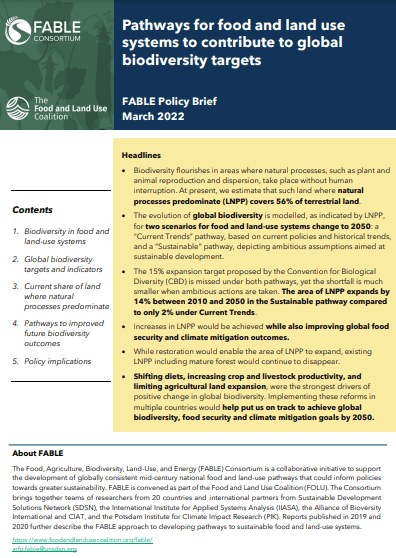This brief examines the impacts of food and land use systems on biodiversity in 20 countries and assesses the attainability of three Post-2020 Global Biodiversity Framework targets under two scenarios. It finds that if we continue with business as usual, we will leave the world far off track for achieving all three, while a more sustainable pathway would significantly accelerate progress on meeting critical biodiversity targets proposed by the Convention for Biological Diversity (CBD).
Human activities such as logging of forests and agricultural expansion and intensification, are responsible for rapidly increasing rates of species loss everywhere. The brief outlines actions to promote healthier diets, increase crop and livestock productivity, and points to limiting agricultural expansion as the strongest drivers of positive change in global biodiversity. It also highlights the many climate, nutrition and food security co-benefits that such actions could deliver.
